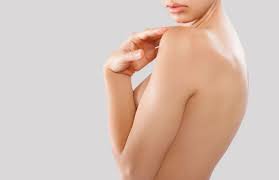Plastic Surgery
Plastic Surgery
Plastic surgery is a medical specialty concerned with the correction or restoration of form and function. After World Wars I and II when soldiers required surgery for missing limbs, burns, and facial reconstruction, this specialty took off and as the field continued to evolve, surgeons formed sub-specialties such as craniofacial surgery. Today, when most people refer to plastic surgery, they are talking about the elective type that enhances appearance.
Some of the most common body parts people want to improve through surgery include:
- Eyes: Correct droopy eyelids or remove puffy bags below the eyes
- Nose: Change the nose shape and size
- Ears: Set protruding ears back closer to the head or reduce the size of large ears
- Face: Remove facial wrinkles, creases, or acne scars
- Breasts: Change the breast size or reshape sagging breasts
- Tummy: Flatten the abdomen
- Hair: Fill in balding areas with one’s own hair
Types of Plastic Surgery
Plastic surgery can be divided into two categories:
- Reconstructive surgery
- Cosmetic surgery
Reconstructive Surgery
Reconstructive surgery focuses on repairing defects to reconstruct a normal function and appearance. This type of surgery differs from cosmetic surgery. That is, it is performed with the aim of restoring the function or appearance of a part of the body, such as after an accident or trauma, burns, cancer, birth defect, or disease.
Reconstructive Procedures
- Breast Reconstruction
- Repair of defects resulting from skin cancer excision
- Scar Revision
- Burn Reconstruction
- Congenital Anomalies
- Cleft Lip and Palate
- Hand Surgery
Cosmetic Surgery
Cosmetic surgery focuses on enhancing appearance. It is undertaken to reshape structures of the body and create changes in self-esteem. The surgery is done because a person believes it will improve their appearance, not for a medical reason. Typical cosmetic procedures include rhinoplasty, breast augmentation, facelifts, blepharoplasty, and liposuction.
9 Most Common Plastic Surgery Procedures
Rhinoplasty
Rhinoplasty is a surgical procedure to reshape the nose, make it bigger or smaller, or bring it into better proportion with the rest of the face by modifying the bone or cartilage. Some people opt for rhinoplasty for cosmetic reasons. Others may have a medical reason, such as difficulty breathing or birth defects. In some cases, where breathing can be improved through surgery, as in the case of a deviated septum, insurance will pay for some or all of the surgery.
Breast Augmentation
Breast augmentation is a surgical procedure to enlarge both breasts, to replace a breast that is absent, or to make asymmetrical breasts equal in size. The procedure may also be called breast implant surgery when the size of the breast is increased. Breast augmentation is not the same as breast lifts or breast reduction, which are actually different types of procedures.
Breast Lift
A breast lift, or mastopexy, is performed on women who want to reshape and raise their sagging breasts. During a breast lift, the surgeon removes excess skin and tightens breast tissue to reshape and raise the breasts. The size of the areolae can also be reduced during the procedure to keep them in proportion to the newly shaped breasts. A typical patient will have this procedure after significant weight loss or pregnancy that usually cause the breast skin to stretch and lose elasticity.
Abdominoplasty
Abdominoplasty, commonly known as a tummy tuck, is used to improve the shape of the abdomen. It removes excess fat, tightens the skin that remains, and restores weakened or separated muscles in the abdomen in order to improve the profile. This cosmetic plastic surgery can improve the appearance of loose or sagging skin, but cannot remove stretch marks. Abdominoplasty is growing in popularity, primarily among women who have excess skin after being pregnant or after losing significant weight after bariatric surgery.
Liposuction
Liposuction is a cosmetic procedure that removes fat deposits to improve the shape of the body. During this procedure, fat is sucked out using a vacuum-like device (cannula). Liposuction can be performed on the abdomen, back, buttocks, hips, thighs, and upper arms. Liposuction can also reduce the size of breasts in men. This procedure can be used on more than one area in a single day.
Hair Transplantation
A hair transplant is a surgical procedure that moves hair follicles from back or sides of the scalp (donor site) to the bald or thinning area (recipient site), which is usually the front, top, or crown of the scalp. The technique is primarily used to treat male pattern baldness and is among the most dependable hair loss solutions. In a single session, more than a thousand hairs may be moved, but some people may require more than one session.
Eyelid Surgery
In eyelid surgery, or blepharoplasty, drooping eyelids and bags below the eyes are corrected by removing excess fat, skin, and muscle from the eyelids. This surgery can be done for cosmetic reasons or to improve vision in patients where the eyelids obstruct vision. During the procedure, wrinkles and puffiness can be reduced. Fat pads under the eyes causing the appearance of bags are removed as necessary in the lower lid procedure.
Facelift
A rhytidectomy, or facelift, is a surgical procedure that aims to give a more youthful appearance to the face by removing the wrinkles and deep creases, correcting sagging skin, and tightening facial muscles. During this procedure, facial tissues are lifted, excess skin removed, and skin replaced over repositioned contours. Neck lifts are commonly done in conjunction with facelifts.
Otoplasty
Otoplasty, also known as cosmetic ear surgery, is a surgical procedure to change the shape, size, or position of the ears. The most common reason for getting otoplasty is to correct certain issues. Cosmetic and reconstructive ear surgery is utilized in treating a variety of deformities, including folded, cupped, protruding, cauliflower, small, and very large ears. Large ears or ears that prominently stick out from the head can cause a lot of grief, especially for children. So correction of even minor deformities can have profound benefits to appearance and self-esteem.
Dr. Hamid Reza Vafaei













Leave a Reply
Want to join the discussion?Feel free to contribute!